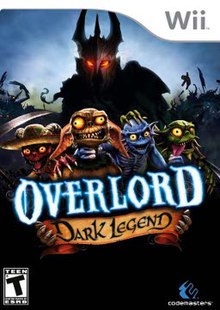
Warcraft III: Reign of Chaos is a high fantasy real-time strategy computer video game developed and published by Blizzard Entertainment released in July 2002. It is the second sequel to Warcraft: Orcs & Humans, after Warcraft II: Tides of Darkness, the third game set in the Warcraft fictional universe, and the first to be rendered in three dimensions. An expansion pack, The Frozen Throne, was released in July 2003. Warcraft III is set several years after the events of Warcraft II, and tells the story of the Burning Legion's attempt to conquer the fictional world of Azeroth with the help of an army of the Undead, led by fallen paladin Arthas Menethil. It chronicles the combined efforts of the Human Alliance, Orcish Horde, and Night Elves to stop them before they can corrupt the World Tree.
Birthright is a Dungeons & Dragons campaign setting that was first released by TSR in 1995. It is based on the continent of Cerilia on the world of Aebrynis, in which the players take on the role of the divinely-empowered rulers, with emphasis on the political rulership level of gameplay. The setting revolves around the concept of bloodlines: divine power gained by heroes and passed on to their descendants. Characters with a bloodline create an aura of command known as Regency, which is measured in the game using regency points or RP. Using regency, characters acquire a domain composed of provinces and holdings. The development of these domains is as much a part of the game as development of the characters. The game uses three-month domain turns to model actions of rulers over nations in much the same way as Dungeons & Dragons uses combat rounds to simulate time to model the characters' actions in battle. In 1996, Birthright won the Origins Award for Best Roleplaying Supplement of 1995.
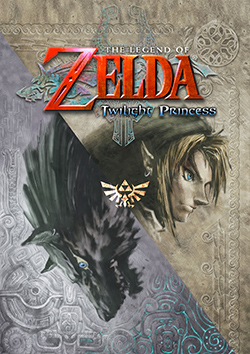
The Legend of Zelda: Twilight Princess is a 2006 action-adventure game developed and published by Nintendo for the GameCube and Wii. Originally planned for release exclusively on the GameCube in November 2005, Twilight Princess was delayed by Nintendo to allow its developers to refine the game, add more content, and port it to the Wii. The Wii version was a launch game in North America in November 2006, and in Japan, Europe, and Australia the following month. The GameCube version was released in December 2006 as the final first-party game for the console.

The Lord of the Rings: The Battle for Middle-earth II is a 2006 real-time strategy video game developed and published by Electronic Arts. The second part of the Middle-earth strategy game series, it is based on the fantasy novels The Lord of the Rings and The Hobbit by J. R. R. Tolkien and its live-action film series adaptation. It is the sequel to Electronic Arts' 2004 title The Lord of the Rings: The Battle for Middle-earth. Along with the standard edition, a Collector's Edition of the game was released, containing bonus material and a documentary about the game's development.
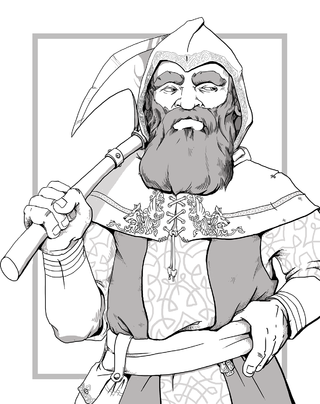
A dwarf, in the Dungeons & Dragons (D&D) fantasy roleplaying game, is a humanoid race, one of the primary races available for player characters. The idea for the D&D dwarf comes from the dwarves of European mythologies and J. R. R. Tolkien's novel The Lord of the Rings (1954-1955), and has been used in D&D and its predecessor Chainmail since the early 1970s. Variations from the standard dwarf archetype of a short and stout demihuman are commonly called subraces, of which there are more than a dozen across many different rule sets and campaign settings.

The Lord of the Rings: War of the Ring is a 2003 real-time strategy game (RTS) developed by Liquid Entertainment and published by Sierra Entertainment, a subsidiary of Vivendi Universal Games. Set in J. R. R. Tolkien’s fictional Middle-earth, it expands upon the events of the War of the Ring as told in his fantasy novel, The Lord of the Rings.

Super Mario Galaxy is a 2007 platform game developed and published by Nintendo for the Wii. It is the third 3D game in the Super Mario series. As Mario, the player embarks on a quest to rescue Princess Peach, save the universe from Bowser, and collect 120 Power Stars, after which the player can play the game as Luigi for a more difficult experience. The levels consist of galaxies filled with minor planets and worlds, with different variations of gravity, the central element of gameplay. The player character is controlled using the Wii Remote and Nunchuk and completes missions, fights bosses, and reaches certain areas to collect Power Stars. Certain levels use the motion-based Wii Remote functions.

Tomb Raider: Anniversary is an action-adventure video game developed by Crystal Dynamics and Buzz Monkey Software and published by Eidos Interactive in 2007 for Microsoft Windows, PlayStation 2, Xbox 360, PlayStation Portable, Wii and mobile phones. It was later ported to OS X in 2008 and PlayStation 3 in 2011. The eighth overall entry in the Tomb Raider series and second in the Legend trilogy, Anniversary is a remake of the first Tomb Raider game, originally released in 1996.

Overlord is an action role-playing video game developed by Triumph Studios and published by Codemasters for Xbox 360, Microsoft Windows, Linux and PlayStation 3. It was released in 2007 in North America on 26 June, in Europe on 29 June and Australia on 6 July.

Valhalla Knights is a fantasy action role-playing game developed by K2 LLC and published by Marvelous Entertainment for Sony PlayStation Portable.
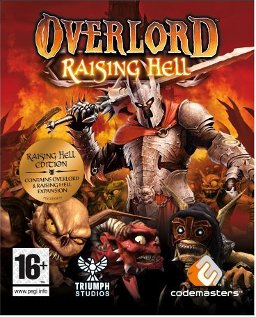
Overlord: Raising Hell is the expansion to the 2007 action role-playing game Overlord, which was released for download over Xbox Live for the Xbox 360 version and online for the PC version on 15 February 2008, alongside additional multiplayer add-ons. A PlayStation 3 version of Overlord was released in June 2008 including the downloadable content.
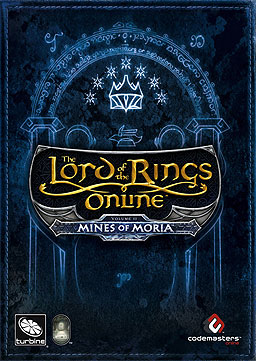
The Lord of the Rings Online: Mines of Moria is the first expansion pack for the massively multiplayer online role-playing game The Lord of the Rings Online released on November 18, 2008. It added the new game regions of Moria and Lothlórien, two new character classes and a new Legendary Items system. Level cap was raised to 60 and the main storyline was extended by six books of the new Epic Volume II.

Sonic Unleashed is a 2008 platform game developed by Sonic Team and published by Sega as part of the Sonic the Hedgehog series. The plot follows Sonic as he attempts to restore the world after his nemesis Doctor Eggman shatters it with a powerful laser to unleash Dark Gaia, an ancient evil which periodically transforms Sonic into a werewolf form. Gameplay features two distinct styles: daytime stages incorporate Sonic's traditional platforming and trademark speed; while night-time stages see Sonic transform into the Werehog and engage in slower combat against waves of enemies using the Werehog's brute strength.

Blood Bowl is a 2009 fantasy sports video game developed by Cyanide, loosely based on gridiron football, and adapted from the board game of the same name, which is produced by Games Workshop, using the CRP ruleset. It was released for Microsoft Windows, Xbox 360, Nintendo DS, PlayStation Portable, iOS, and Android.

Sonic and the Black Knight is a 2009 platform video game developed by Sonic Team and published by Sega as part of the Sonic the Hedgehog series for the Nintendo Wii. It is the second and final entry in the Sonic Storybook series, following Sonic and the Secret Rings (2007), and involves Sonic being transported to the story of King Arthur by wizard Merlina, under the pretense that they are attempting to stop a corrupted Arthur ; however, it is later revealed that there was no corruption and that Merlina had secretly wanted to become the Dark Queen to prevent the legend's fate from occurring. Gameplay involves controlling Sonic around with the Wii Remote's motion-sensing functionality, particularly swinging around the sword to attack enemies and to move forward.

Overlord II is a 2009 action role-playing game and sequel to the 2007 video game Overlord and its 2008 expansion pack in the form of Overlord: Raising Hell. It was developed by Triumph Studios and published by Codemasters for PlayStation 3, Windows, and Xbox 360. All versions were released in North America on 23 June 2009, in Europe on 26 June and Australia on 9 July 2009, alongside two spin-offs; Overlord: Dark Legend and Overlord: Minions for the Wii and the Nintendo DS, respectively. Ports for Linux and OS X were released on 26 July 2016.

Overlord: Minions is a 2009 puzzle action video game developed by Climax Action and published by Codemasters for the Nintendo DS. It was announced August 14, 2008 alongside addition franchise expansions Overlord II and Overlord: Dark Legend.

The Lord of the Rings: Aragorn's Quest is an action-adventure video game released in 2010 by WB Games on various Nintendo and Sony platforms, with Headstrong Games developing a Wii version and TT Fusion developing the game on other platforms.

The Lord of the Rings: War in the North is a 2011 action role-playing hack and slash video game developed by Snowblind Studios and published by Warner Bros. Interactive Entertainment for PlayStation 3, Xbox 360, and Microsoft Windows. An OS X port was developed and published by Feral Interactive in 2013. It is the first video game based on both J. R. R. Tolkien's 1954 high fantasy novel The Lord of the Rings and Peter Jackson's film trilogy adaptation released in 2001, 2002 and 2003. This is because, until 2009, Vivendi Universal Games, in partnership with Tolkien Enterprises, held the rights to make games based on Tolkien's literary works, whilst Electronic Arts held the rights to make games based on the New Line Cinema films. In 2009, WB Games acquired the rights for both intellectual properties.
Overlord is an action role-playing video game series published by Codemasters and originally developed by Triumph Studios. The franchise was introduced in 2007 and has received six video games to date. The latest game is Overlord: Fellowship of Evil, developed by Codemasters.
